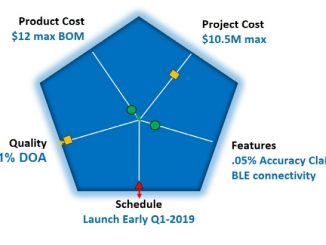Articles on Scrum and Agile Project Management
Agile software development refers to methodologies and principles of effective, iterative, and collaborative programming. It becomes more and more popular nowadays as it suggests a more affordable and client-oriented process. Agile nearshoring means delegating programming tasks to dedicate teams in a nearby country to increase business success and get a project released faster.
In Kanban, the concept of work in progress (WIP) limit defines the maximum amount of work that can be performed by a team or that can exist in each active status of a workflow. In this article, Gerard Chiva explains why limiting WIP is an important decision for Agile teams.
There are three roles in a Scrum team: the ScrumMaster, the developer and the product owner. This last role might be the most important for a team that uses an Agile project management approach in software development. The product owner has the responsibility of building and prioritizing the backlog. If this is not done properly, you will just not build the right product. This article presents the certifications available for product owners in Scrum.
The values contained in the Manifesto for Agile Software Development might be good for the Agile teams, but most of the senior management in organizations prefer having a defined solution, a detailed planning and a budget that should be respected. This article discusses how to make these two different approaches work together.
In an ideal Agile world, the Scrum Master takes care of only one Scrum team. This is however not always possible and then he has to split his time between many teams. In this article, Alexander Chaves shares some tips on how to lead multiple Agile teams without becoming insane.
Metrics are an important part of the Agile software development approaches like Scrum. They are however, like velocity, more often focus on the performance of the delivery team. What about the customers? In this article, Fabio Gasparri discusses Key Performance Indicators (KPIs) that will matter for the clients.
A Scrum team cannot deliver value without a good Product Owner. This is for me the most important role and it is not easy to keep an Agile balance between a long term business vision that could lead the team to success and the ability to adapt to change after receiving customer feedback. In this article, Zuzi Šochová shares a list of the most common mistakes made by Product Owners.







